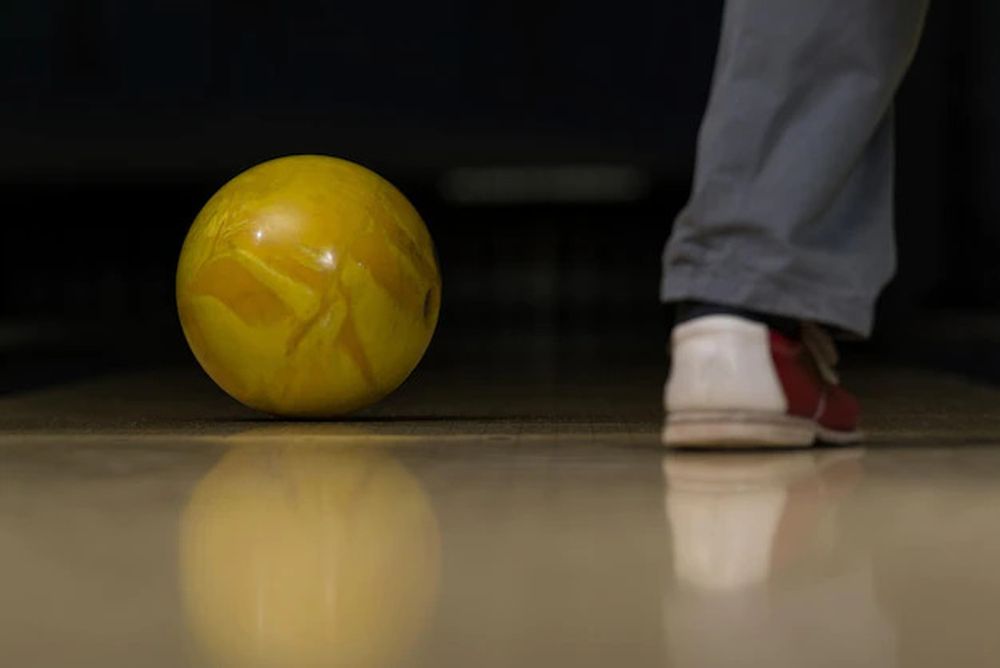While bowling is considered one of the safest sports by the masses, fractures are not entirely alien to it. Millions of people go to bowling alleys with their families or friends each year, and accidents happen.
Apart from a bowling alley being tremendously fun, there are certain risks you need to be aware of since you’re dealing with a heavy ball on a slippery surface.
Bowlers pose risks like sprains, fractures, and muscle contractions of the toes, thumbs, feet, or hands. And even if you’re an experienced bowler, certain maneuvers on repeat can have heavy-duty damage on your spine.
That said, every sport or physical activity has risks, but If you’re wondering if a bowling ball can break your foot? Read on!
Can A Bowling Ball Break Your Foot?
The weight of an average bowling ball starts from 6lb and goes up to 16 pounds. Say an average male beginner bowler typically starts with a 14-pound bowling ball, and a female may start with 10 lb.
While the ball itself may not be able to break your foot, if it is dropped from a high place, or someone swings the ball with force, and it accidentally hits your foot? You certainly risk breaking your foot on top of the pain.
So a foot fracture depends on the force applied to a bowling ball when it is dropped accidentally.
However, even though the impact will hurt, a foot fracture rarely happens when bowling since it is a low-impact fun activity/sport. You also might be lucky enough to get away with swelling, bruising, or nothing that an ice pack can’t fix.
Even so, a bowling ball dropping on your foot is not the only way you can get a foot fracture when you go bowling. The slippery surface, combined with the different maneuvers you use repetitively, poses a risk for stress fracture.
Using a bowling shoe to protect yourself from strains, sprains, and stress fractures is essential.
What Type Of Injuries Are Most Common When Bowling?
Bowling as a sport or an activity is considered one of the safest and usually has no age limit. From professionals to anyone who loves bowling, it is essential to know the risks, even though it is fun.
Given that, wondering, “can a bowling ball break your foot,” is justifiable; these are some of the most common injuries you should be aware of!
Shoulder
Shoulder tendonitis is one of the most common injuries you can sustain when bowling. Since the sport requires you to engage in the fast and repetitive swinging of your arms, it poses this risk.
It usually happens to players who do not use a proper technique or haven’t warmed up. You might be able to avoid this injury by practicing a maneuver without a bowling ball or stretching out your arms before you decide to play.
Back
Bowling involves a lot of twists and turns in a slippery environment holding a heavy object. So it is not rocket science that without being cautious, it could lead to back sprains and different types of spine injuries.
All the worst if you have suffered back problems before. Players who play with an improper form or technique, a ball size too heavy for them, or without taking a break have high risks.
Since the ball is heavy and the sport involves many face-paced movements, you might also be at risk of spine injuries such as a herniated disk if you lack the physical ability and strength.
It is essential to have some flexibility, strength, conditioning, and fitness before you do decide to go bowling.
Wrist
Wrist tendonitis is another common injury you can get from bowling. The inflammation in the tissues of your wrist occurs since there is a lot of twisting and swinging movements and maneuvers involving your wrist when bowling.
It is important to note that you should always have proper form and technique before repeatedly using it. The same prevention of shoulder tendonitis applies here. You might prosper from stretching your wrist out before you go bowling.
Elbow
Similar to a golfer’s or tennis elbow, a bowler’s elbow is another type of epicondylitis. The inflammation on your elbow typically happens because of the repetitive movement of your wrist.
If you ever have a bowler’s elbow, the usual treatment for this is taking some time off from bowling. And in rare severe cases, you might find yourself prepping up for surgery.
The bowler’s thumb
Although not as familiar to regular people as the rest of the injuries mentioned, professional bowlers might be at risk of a bowler’s thumb. It is caused by the repetitive impact of the thumb with the hole of the bowling ball.
Players could also risk having a bowler’s thumb with repetitive special maneuvers such as adding spins to the ball or throwing harder than usual.
What Are Some Tips For A Safe Bowling Session?
Using proper techniques
Trying certain maneuvers you see professionals execute is common in teenagers or adults. We must understand that they have the experience and skills to perform it. Always be mindful of your body’s capabilities before you try them.
Proper ball pick up
It is essential to pick up the ball with both hands and only stick your fingers in the holes once you’re ready to roll it out. This can help you prevent injury to your fingers.
Also, it is essential to note that you should always pick a bowl that’s the right fit for your fingers to avoid any injuries to your wrist or fingers.
Warm-up is essential
For casual or professional bowling, you should never forget to warm up by stretching before you begin to play.
Wrapping up
Bowling is a fun sport you can play with just about anyone you want. However, bowling balls are ultimately heavy, making them capable of breaking your foot or any parts of your body if a certain pressure is applied.
We must always be cautious of our surroundings in a bowling alley cause accidents happen everywhere, and it is never planned.









